What is SAP HANA ?
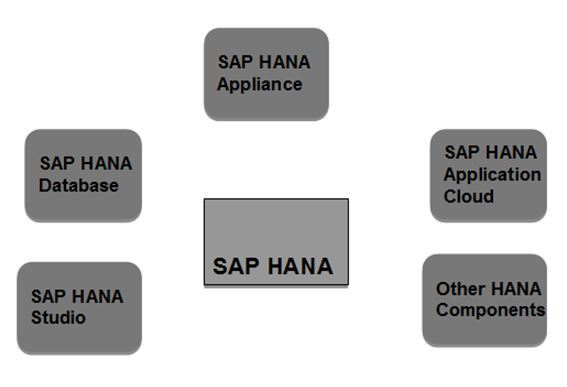
What is SAP HANA ? SAP HANA is an implementation of in-memory database technology, which consists of a database, a server for storage, client software and extract/ transform/ load middleware. This flexible appliance with hardware and software combination, integrates a number of SAP components which enables the customers to analyze large volumes of data in real-time.
This preconfigured Appliance consists of In-Memory software bundled with hardware delivered from the hardware partner such as HP, IBM, CISCO, Fujitsu etc. It also has In-Memory Computing Engine (ICE) and tools for data modeling, data and life cycle management, security, and operations. There is Real-time Data replication via Sybase Replication Server and SAP Landscape Transformation (SLT). SAP HANA support for multiple interfaces and Content packages (Extractors and Data Models) introduced over time via RDS (Rapid deployment solution).
SAP HANA allows for the processing of massive quantities of real-time data in the main memory of the server. This provides current insights almost immediately and opens up possibilities for news ways of conducting business.
SAP HANA integrates a number of SAP components including the SAP HANA database, SAP LT (Landscape Transformation) Replication Server, SAP HANA Direct Extractor Connection (DXC) and Sybase Replication technology. This is delivered as an optimized appliance.
HANA is offered in three licensees, the difference among them mainly based on the data integration software. These are HANA Platform Edition, SAP HANA Enterprise Edition and SAP HANA Enterprise Extended Edition.
Broadly there are five components within SAP HANA:
1) SAP HANA DB (or HANA DB): This refers to the database technology.
2) SAP HANA Studio: This refers to the suite of tools provided by SAP for modeling and administration.
3) SAP HANA Appliance: SAP HANA Appliance refers to HANA DB as delivered on partner certified hardware as an appliance. It also includes the modeling tools from HANA Studio as well as replication and data transformation tools to move data into HANA DB.
4) Other HANA components: This refers to SAP Host Agent, SAP HANA Client, SAP HANA Load Controller, Sybase Replication Server etc.
5) SAP HANA Application Cloud: This refers to the cloud based infrastructure for delivery of applications.
1.1 SAP HANA DB
The SAP HANA database is the heart of SAP’s in-memory technology. SAP HANA database is a hybrid in-memory database that combines row-based, column-based, and object-based database technology. This data base is optimized to exploit the parallel processing capabilities of modern multi core CPU architectures.
HANA DB takes advantage of 1) the low cost of main memory (RAM), 2) data processing abilities of multi-core processors and 3) the fast data access of solid-state drives relative to traditional hard drives to deliver better performance of analytical and transactional applications. It offers a multi-engine query processing environment which allows it to support both the relational data, with both row and column oriented physical representations in a hybrid engine as well as graph and text processing for semi and unstructured data management within the same system.
HANA is a proprietary columnar database that combines technology from Sybase and the Business Warehouse Accelerator.
The database core is fundamentally different from the relational databases such as DB2, Oracle, SQL Server, or MaxDB. The database API consists of SQL programming language with full support of stored procedures, based on ANSI SQL 92 and JDBC and ODBC drivers for connectivity with standards compliant for interoperability. Security is role based and equivalent to the relational databases.
The HANA database architecture is massively parallel processing (MPP). The Data is distributed across many physical blade servers. Behind the scenes, the engine splits a query into pieces, sends part of the work to each blade, and assembles the finished result.
All of the data and logic is stored in RAM. During startup, operations can start while the system is still loading data into RAM.
1.2 SAP HANA Studio
SAP HANA Studio refers to the suite of tools provided by SAP for modeling and administration of SAP HANA. It consists of Administration Console, Information Modeler, Lifecycle Management and Documentation Overview.
SAP HANA Studio has collection of applications and tools for creating new or modifying existing models of data. It enables technical users to manage the SAP HANA Database. There are options to create and manage the user authorizations. It is a client tool, which can be used to access local or remote SAP HANA Databases.
The HANA Studio is Model driven with drag-and-drop configuration which generates the SQL behind it. Direct editing of SQL and stored procedures are also supported. System administration and Sybase Replication Server (SRS) configuration are also included.
1.3 SAP HANA Appliance
The HANA appliance server consists of Intel x86 blades. All of the database data is stored in RAM. During the HANA ramp ups, 1 TB appliances were used. In 2010 the biggest HANA hardware configuration available was 2TB of memory with 512GB per node. At SAPPHIRE 2012, hardware partners presented a 16 node HANA system with 16TB Memory with 1TB per node
Only half of the server’s RAM should be used for data. The columnar format is ~ 80% more efficient than an uncompressed relational database. On a comparison, 8 TB RAM in HANA is roughly 20 TB in Oracle or DB2 without compression.
There is Solid state disk (SSD) storage for pre-loaded software and for backing up the data. Non-volatile flash memory is used, and this is up to 30x faster than spinning hard drives..
SAP HANA Appliance is Pre installed and factory-configured software. This includes SUSE LINUX, proprietary Intel microcode, the hardware vendor’s system management tools, and SAP’s stack of HANA software.
1.4 Other SAP HANA Components
The other components of SAP HANA includes: SAP Host Agent, SAP HANA Client, SAP HANA Load Controller, Sybase Replication Server, SAP SW Update Manager and SAP JVM.
Sybase Replication Server is an ETL tool. This enables easy replication directly with a database, bypassing the API layer. It is supported for accessing ERP and other SAP applications. Software configuration management tools includes out-of-the-box integration with Solution Manager for software patches, solution deployment, and monitoring, as well as the SAP Java Virtual Machine (JVM) to run these tools.
1.5 SAP HANA Application Cloud
SAP announced in September 2011 partnership with EMC and VMWare to enable a HANA based application infrastructure cloud. This platform as a service (PaaS) offering includes HANA DB as a service in conjunction with a choice of either a Java based or ABAP based stack.
Start RIGHT HERE If you are new to SAP HANA
You may also like to read, Graph Databases, NewSQL Databases, Free Graph Databases, Top Free and Commercial MultiValue Databases, Top Free and Commercial SQL and No SQL Cloud Databases.


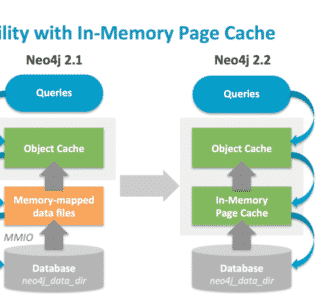
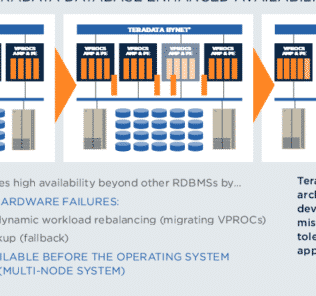
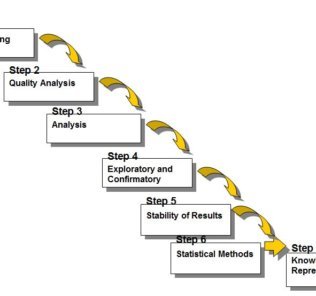
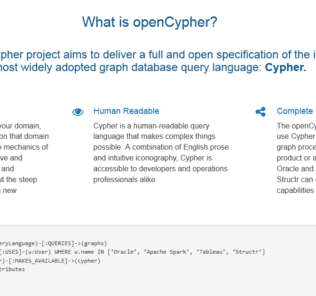




By clicking Sign In with Social Media, you agree to let PAT RESEARCH store, use and/or disclose your Social Media profile and email address in accordance with the PAT RESEARCH Privacy Policy and agree to the Terms of Use.